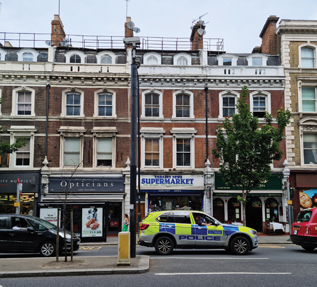A revised surveillance camera code of practice is out to consultation.
According to the document, it’s ‘a significant step in the process of delivering the Government’s commitment to the ‘further regulation of CCTV’’. That’s a task ‘best managed in gradual and incremental stages’, the document adds. The code like the commissioner’s office dates from the Protection of Freedoms Act 2012 passed by the Coalition Government, which made it a legal requirement for the Home Secretary to publish the code. This is the first update of the code since it was published in 2013.
The consultation closes on September 8. You can read the 20-page draft new code at https://www.gov.uk/government/consultations/surveillance-camera-code-of-practice.
The code still only applies to ‘relevant bodies’ under the 2012 Act – local government and police forces. For other users of video surveillance, abiding by the code is only voluntary. On that point, the document says that as ‘understanding and application of the code increases the government may consider including other bodies as relevant authorities who will have to have regard to the code’.
As for what the main changes to the code are, it’s mainly to keep up with legal and technology changes; as the previous Surveillance Camera Commissioner Tony Porter pointed out, new sorts of surveillance have come on since the original law and code, such as drones, camera analytics and body-worn cameras. The code is updated to the Data Protection Act 2018, and the court of appeal judgment on South Wales Police’s use of automated facial recognition, in the case of Bridges versus South Wales Police. To recap briefly, in August 2020 the appeal went against the police for their use of facial recognition; the appeal court ruling against police for example over a data protection impact assessment (DPIA), required under the 2018 Data Protection Act; and under equality law.
In a blog after the judgement, Tony Porter wrote that the ‘Home Office and the Secretary of State [Home Secretary Priti Patel] have been asleep on watch’ and ‘in the public interest’ called for a review of the code; and ‘an independent review of the legal framework which governs overt state surveillance’. He blogged of ‘frustration with the Home Office’ that it had not updated the code yet.
On use of facial recognition ‘or other biometric characteristic recognition systems’, the revised code says that any such system ‘needs to be clearly justified and proportionate in meeting the stated purpose, and be suitably validated’. It should always involve human intervention before resulting in any decisions that affect people ‘adversely’.
One of Tony Porter’s last acts as commissioner was to issue best practice guidance, ‘Facing the Camera’, to police forces in England and Wales, in December. The current Biometrics and Surveillance Camera Commissioner, Prof Fraser Sampson, took up the post on March 1. For his official blog, visit https://videosurveillance.blog.gov.uk/.
Briefly to recap about the code, which only covers England and Wales; it sets out 12 guiding principles for proportionate use of surveillance cameras, that should be ‘in pursuit of a legitimate aim’ and ‘necessary to meet a pressing need’, and transparent and accountable. It does not go into technical or operational detail about how to do surveillance (in the words of the draft, setting ‘standards and good practice without being prescriptive’). For example, on a DPIA, the revised code points to guidance on undertaking a DPIA ‘available from the Information Commissioner’s Office’, the ICO being the UK’s data protection regulator. The ICO has for many years largely left CCTV alone.
Likewise for badging of CCTV control room operators, the revision points to the Security Industry Authority (SIA) as ‘charged with licensing individuals working in specific sectors of the private security industry. A public space surveillance (CCTV) licence is required when operatives are supplied under a contract’, and the SIA can detail more about licencing ‘that an individual is fit and proper’.
Events
The CCTV User Group has an online ‘Question Time‘ about the code on August 26. Prof Sampson is among the invited speakers at the Global MSC annual conference for CCTV users, on October 19 in Bristol.
More on public space CCTV in the July to November print editions of Professional Security magazine.
Photo by Mark Rowe: Met Police patrol car passes on-street CCTV, Notting Hill, west London.










